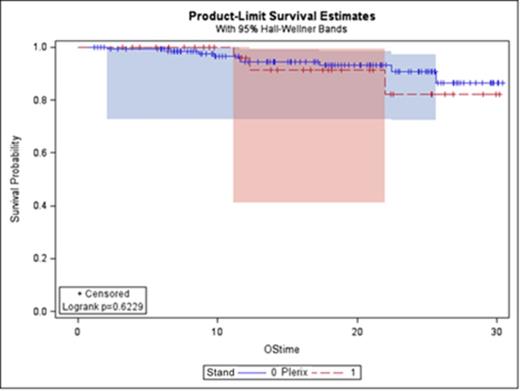Abstract
Background: P is used in combination with G-CSF to improve the mobilization of peripheral blood hematopoietic stem cells in poor mobilizers. Limited data are available in regard to effects of P on post-transplant outcomes in comparison with non-P chemomobilized patients.
Methods: In this retrospective study, we compare the engraftment and the outcomes of 34 patients mobilized with P + G-CSF or just-in-time rescue P in combination with chemotherapy and G-CSF to 143 patients (control group) mobilized with G-CSF with or without chemotherapy in lymphoma and myeloma patients who underwent ASCT between February 2012 and April 2014 at the University of Maryland Greenebaum Cancer Center. Post-transplantation outcomes including infections, hematologic recovery, relapse, progression and survival were recorded.
Results: The median number of collected of CD34+ cells/Kg was 5.9 x 10(6) in the P group and 12.3 x 10(6) in the control group (p=0.0002). Median time to neutrophil engraftment (>0.5 × 10(9) /L) was comparable between the 2 groups: 12 days for the P group and 11 for the control group (p=0.28). There was a trend toward a shorter time to platelet engraftment (>20 × 10(9) /L) in the control (12 days) compared to the P group (14 days) (p=0.056). Progression-free survival at 1 year after (ASCT) was 88.2% in the P group and 81.8% in the control group. There was no difference in the overall survival of both groups (p=0.62)
Conclusions: Short and long-term engraftment and outcomes after ASCT seem to be comparable in lymphoma and myeloma patients receiving plerixafor compared to chemomobilized patients without plerixafor. This observation support the use of plerixafor + G-CSF or just-in-time rescue P in patients who mobilize poorly without P.
No relevant conflicts of interest to declare.
Author notes
Asterisk with author names denotes non-ASH members.


This feature is available to Subscribers Only
Sign In or Create an Account Close Modal